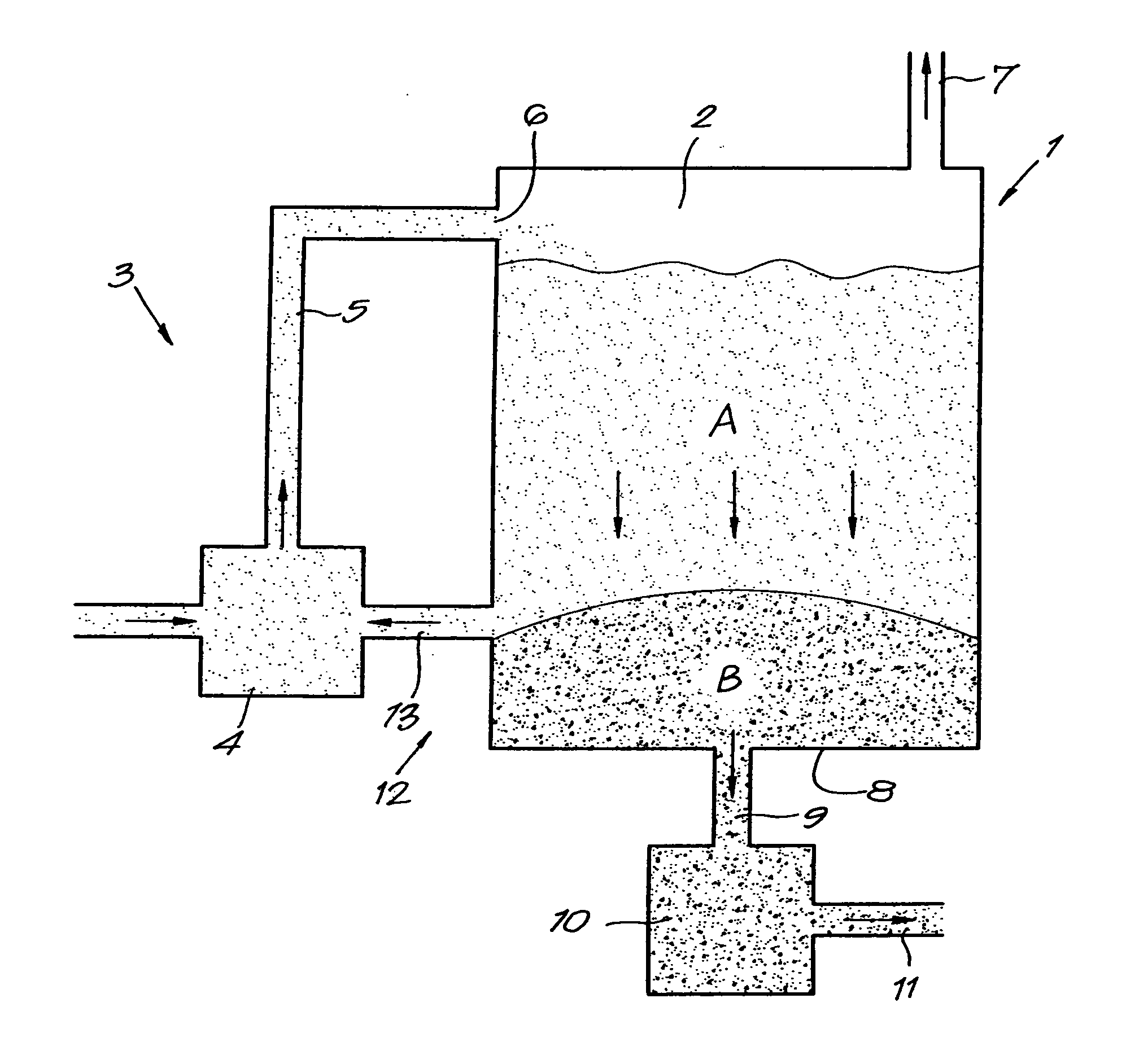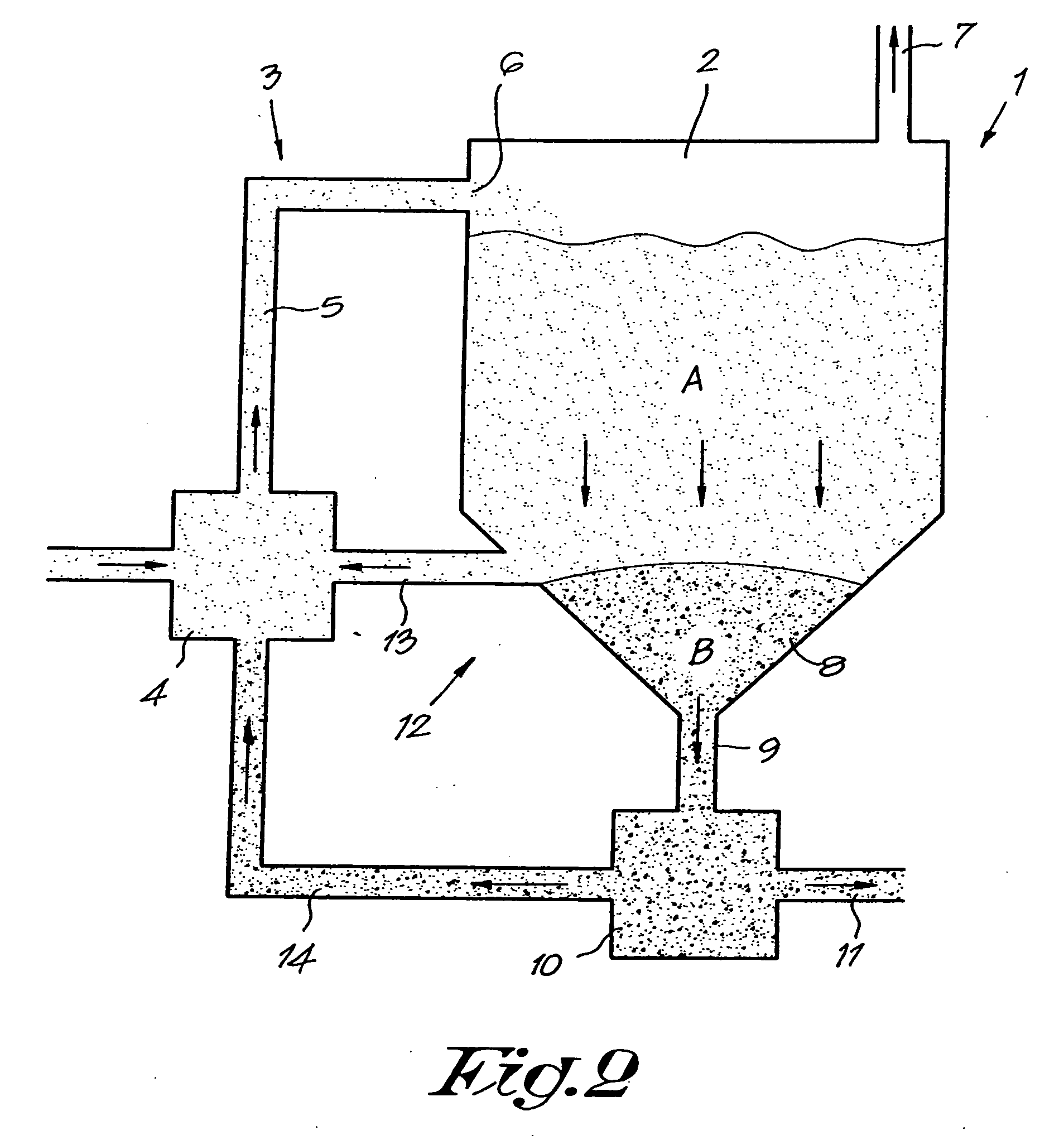Method and device for the anaerobic fermentation of organic material
a biodegradable organic material and anaerobic fermentation technology, applied in biochemistry equipment, biochemistry equipment and processes, waste based fuel, etc., can solve the problems of limited amount of biogas, limited volume of water added, and inability to intensify fermentation, etc., to achieve optimal stabilization of fermented material, large volume, and rapid adjustment of fermentation
- Summary
- Abstract
- Description
- Claims
- Application Information
AI Technical Summary
Benefits of technology
Problems solved by technology
Method used
Image
Examples
example
[0049]Starting with a fermentation tank 1 having a total fermentation room of 2000 m3 (active volume) that is filled with fermenting organic material, 100 m3 of fresh organic material is mixed with 300 m3 of partly fermented material which is used as an inoculant during the daily feeding. It is assumed that the amount of water and / or steam supply required to obtain the desired content of dry matter in the mixing pump is equal to the tonnage of wet biogas that is produced.
[0050]In this way, 300 m3 of partly fermented material is removed daily from the fermentation tank 1 via the return opening 12 and the recycling line 13. Since the recycling line 13 opens at a height above the outlet 9 in the tank 1, the inoculant is formed of partly fermented material which is rich of active bacteria, as opposed to the organic material which is entirely decomposed when it is extracted from the fermentation tank 1 via the outlet 9, whereby the bacteria have already become significantly less active.
[...
PUM
| Property | Measurement | Unit |
|---|---|---|
| time | aaaaa | aaaaa |
| temperature | aaaaa | aaaaa |
| time | aaaaa | aaaaa |
Abstract
Description
Claims
Application Information
 Login to View More
Login to View More - R&D
- Intellectual Property
- Life Sciences
- Materials
- Tech Scout
- Unparalleled Data Quality
- Higher Quality Content
- 60% Fewer Hallucinations
Browse by: Latest US Patents, China's latest patents, Technical Efficacy Thesaurus, Application Domain, Technology Topic, Popular Technical Reports.
© 2025 PatSnap. All rights reserved.Legal|Privacy policy|Modern Slavery Act Transparency Statement|Sitemap|About US| Contact US: help@patsnap.com



